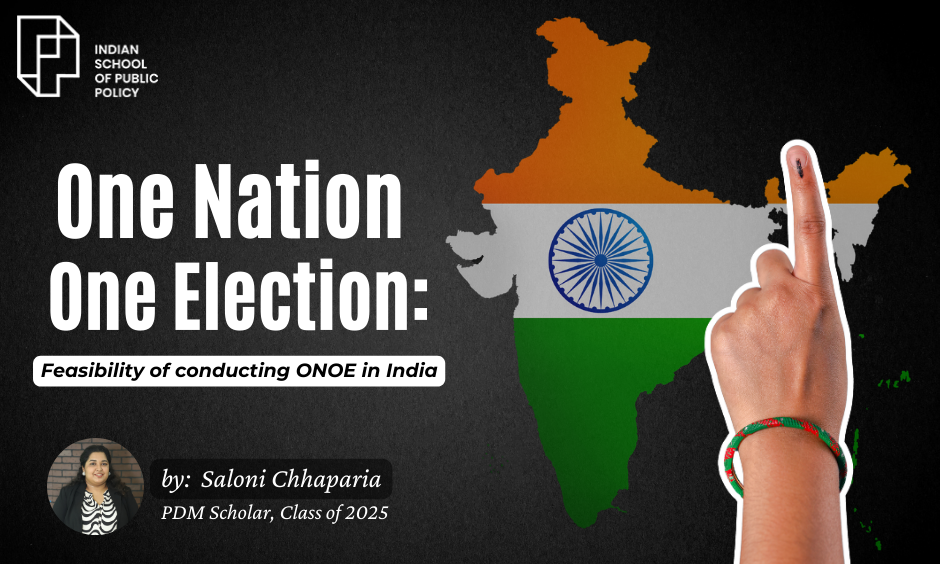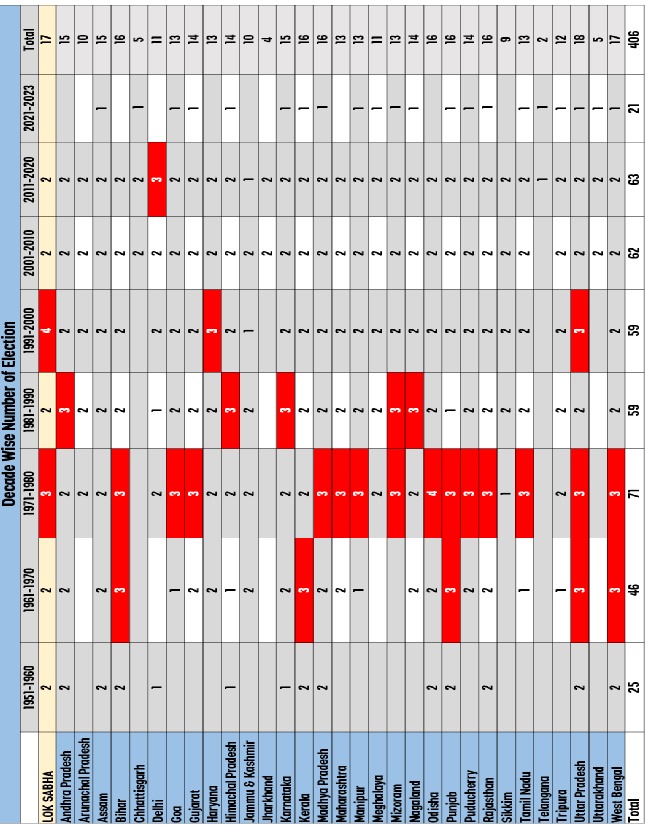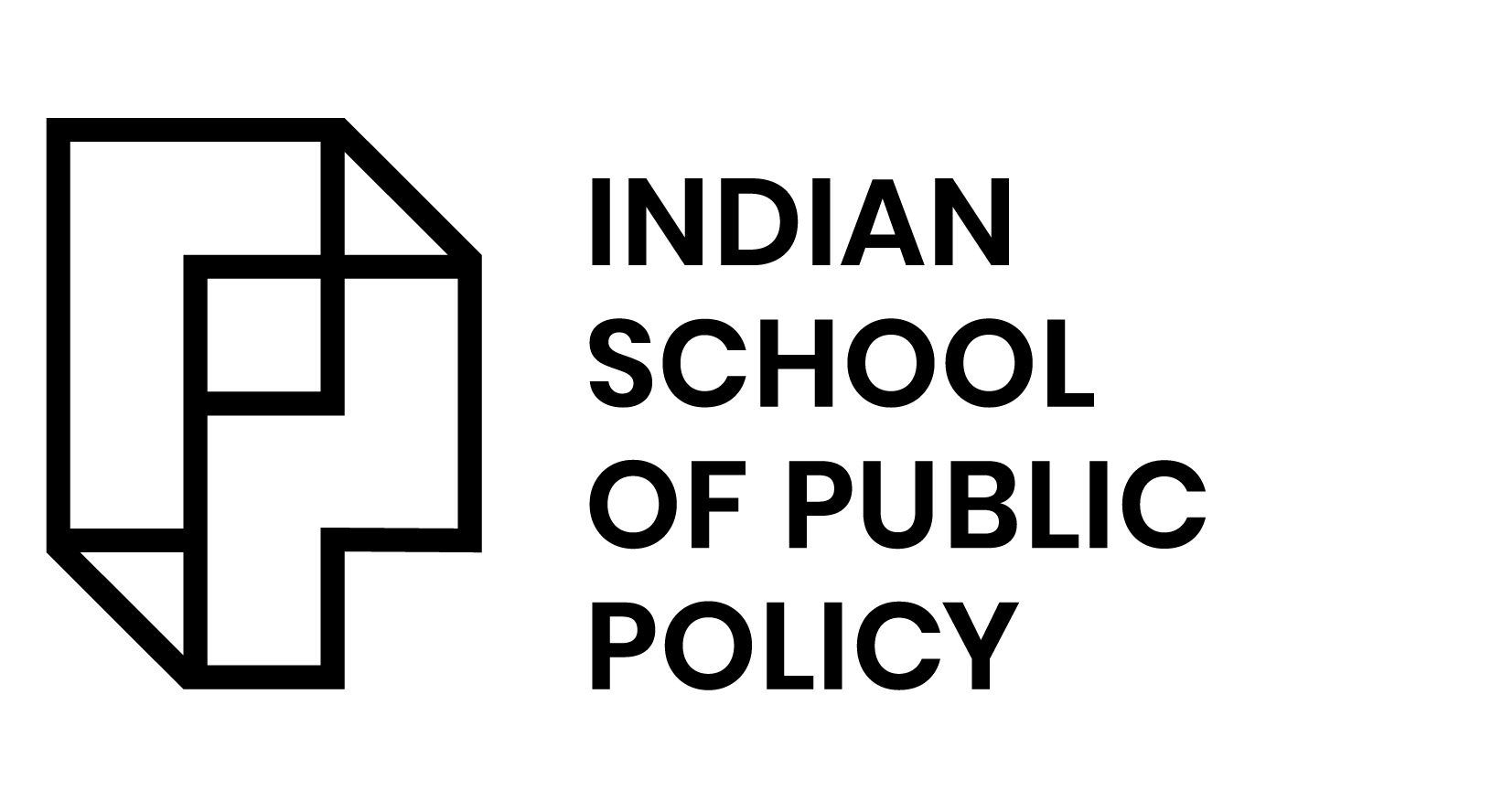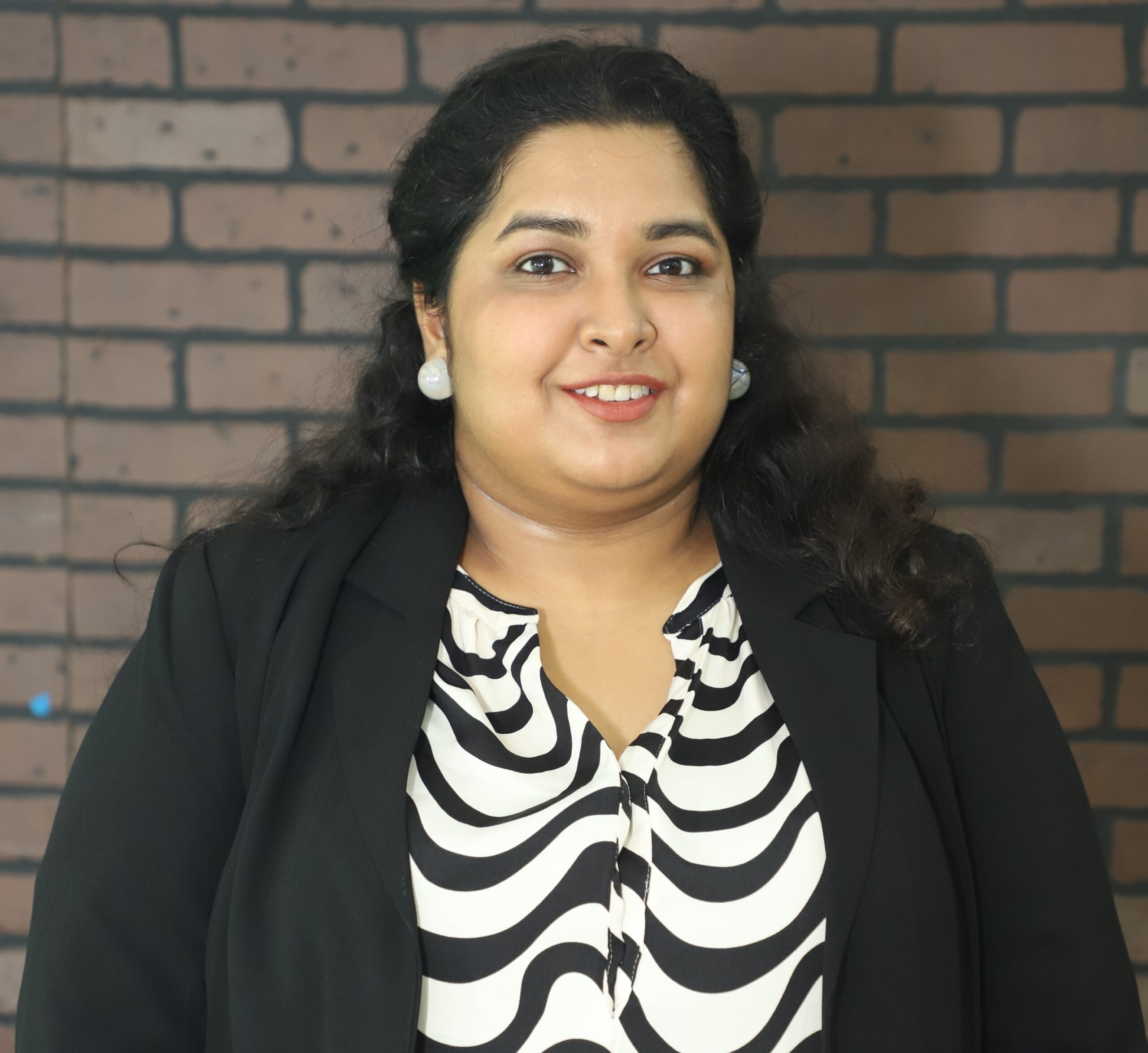
One Nation One Election: Feasibility of conducting ONOE in India | Policy Brief

Background
One Nation One Election refers to conducting simultaneous elections across the country for the Lok Sabha, State Legislative Assembly and the local bodies. This however does imply that the election shall be held on the same day, it means that the election shall be held for all the three levels in different phases within a short interval of time.
India has witnessed simultaneous elections for the first two terms of general election in 1951 and 1957. Here all the state assemblies and the House of People had their representatives elected simultaneously.
However, this was disrupted when in the next decade between 1961 -1970 there were three elections in five states namely Bihar, West Bengal, Punjab, Uttar Pradesh and Kerala. The process of simultaneous elections kept disrupting further with each passing decade. The table below shows the number of elections conducted in each decade in Lok Sabha and the other states to have a better understanding of the current reality.
Credits: High Level Committee on Simultaneous election Report, 2024

Problem overview:
This policy brief elaborates the challenges that might be encountered while implementing Simultaneous Election for Lok Sabha, all the State Assemblies and local assemblies in India. This brief mainly focuses on the High level committee report 2024 and 79th report on Feasibility of Holding Simultaneous Elections to the House of People (Lok Sabha) and State Legislative Assemblies.
Current approach
One Nation One Election initiative is being advocated by the government to have a more stable political governance and economic growth in India. This shall give opportunity to the elected government to focus on the development of the nation, instead of acting on the basis of the effect of their action on the impending election result in most of their term. This shall also reduce the cost incurred by the government in conducting elections and by the political parties in the election campaign done at different levels of elections. This initiative shall cater to the reduction of duplication of effort in preparing different electoral rolls by Election Commission of India and State Election Commision by having one single electoral roll and single election photo identity card. Additionally, this shall help in reducing the political paralysis which takes place in application of Model Code of Conduct at different time periods for different levels of elections.
Challenges in ONOE
The One Nation One Election initiative seems lucrative, but it entails a number of challenges in its implementation. These challenges include constitutional amendment, fear of local issues being ignored and huge amounts of manpower and machinery that would be required.
1. Amendment to the Constitution of India and other relevant provisions:
a. Ratification by the states for the required amendments: The application on simultaneous election shall require a number of amendments in the Constitution of India. These amendments include amending Article 82 and Article 172 of Indian Constitution that deals with the tenure of Lok Sabha and the State legislative assemblies respectively. These amendments shall require a special majority along with ratification by at least half of the states to be passed, as per Article 368 (2) of Indian Constitution. However, the states might be reluctant to ratify the same due to their tenure being reduced for the implementation of the same.
b. Amendment to Representation of People Act, 1951: The Representation of People act, 1951 shall require significant amendments to incorporate provision for conducting simultaneous elections. The Act shall need to establish a fixed election cycle for both Lok sabha and State Legislature. It shall also mention provision elaborating the timeline of other election related activities like candidate nominations, campaigning and polling for both central and state level elections. There must be provisions to govern mid-term elections for Hung Assembly and premature dissolution of Lok Sabha.
c. Other relevant rules like Model Code of Conduct, rules governing campaign funding, electoral rolls and conduct of election must also be amended accordingly.
2. Local issues being diluted: Another challenge that might be encountered is the fear of local issues being diluted in the intersection of the lok sabha and the local assembly elections. In this situation, the localised problems that get attention in state assembly and local body elections might disappear in the mainstream election campaign in an integrated election set up. This can be mitigated by ensuring responsible and fair media coverage during the election process through the code of conduct rules.
3. Regional party’s voice might not be heard: The local political parties shall not be able to get their concerns voiced for state and local body election in simultaneous election due to national political parties taking over the stage. This can act as a threat to fair and informed voting. However, this can be catered to by ensuring adequate campaign resources, fair media coverage and a level playing field in the electoral arena.
4. Term of Hung assembly: The committee, in order to ensure that the one nation one election initiative does not get disrupted, recommended that there shall be a new election to form a hung assembly if the current elected assembly needs to be dissolved. This hung assembly shall have a shorter term which shall be equivalent to a full term of 5 years. However, this would go against the principle of democracy as the hung assembly should have the same term as it would have had in case of an assembly elected simultaneously to Lok sabha.
5. Logistical issues : The implementation of One Nation One Election shall require expansion of the powers of election commission by amending the Article 324 of Indian Constitution. This shall enable it to manage and streamline the election process to conduct free and fair elections. Thai shall also help the Election Commision with logistic resources in terms of manpower and machinery. This would also be required to ensure the comfort of the voter to reduce voter fatigue so as to ensure that voters turn out does not get affected.
Conclusion
One Nation One Election is a very attractive initiative, it entails a number of challenges which needs to be catered to before the actual implementation can take place. This is more difficult currently because along with low rate of informed voting, the self interest of the current state governments whose term would be curtailed would not align with the national good of the country and would act as a major hindrance.
Register your Interest to Study at ISPP

Saloni Chhaparia
PDM Scholar, Class of 2025
Saloni Chhaparia is a PDM Scholar of ISPP. She has demonstrated her leadership and organisational skills by orchestrating a national-level trial advocacy competition and serving on the core committee of both the Moot Court and the Law Society. Saloni’s involvement in these activities underscores her commitment to legal excellence and advocacy. She aspires to explore opportunities in public policy, aiming to apply her legal acumen to shape effective and impactful policies.
LinkedIn: https://in.linkedin.com/in/saloni-chhaparia-39444a1b2


